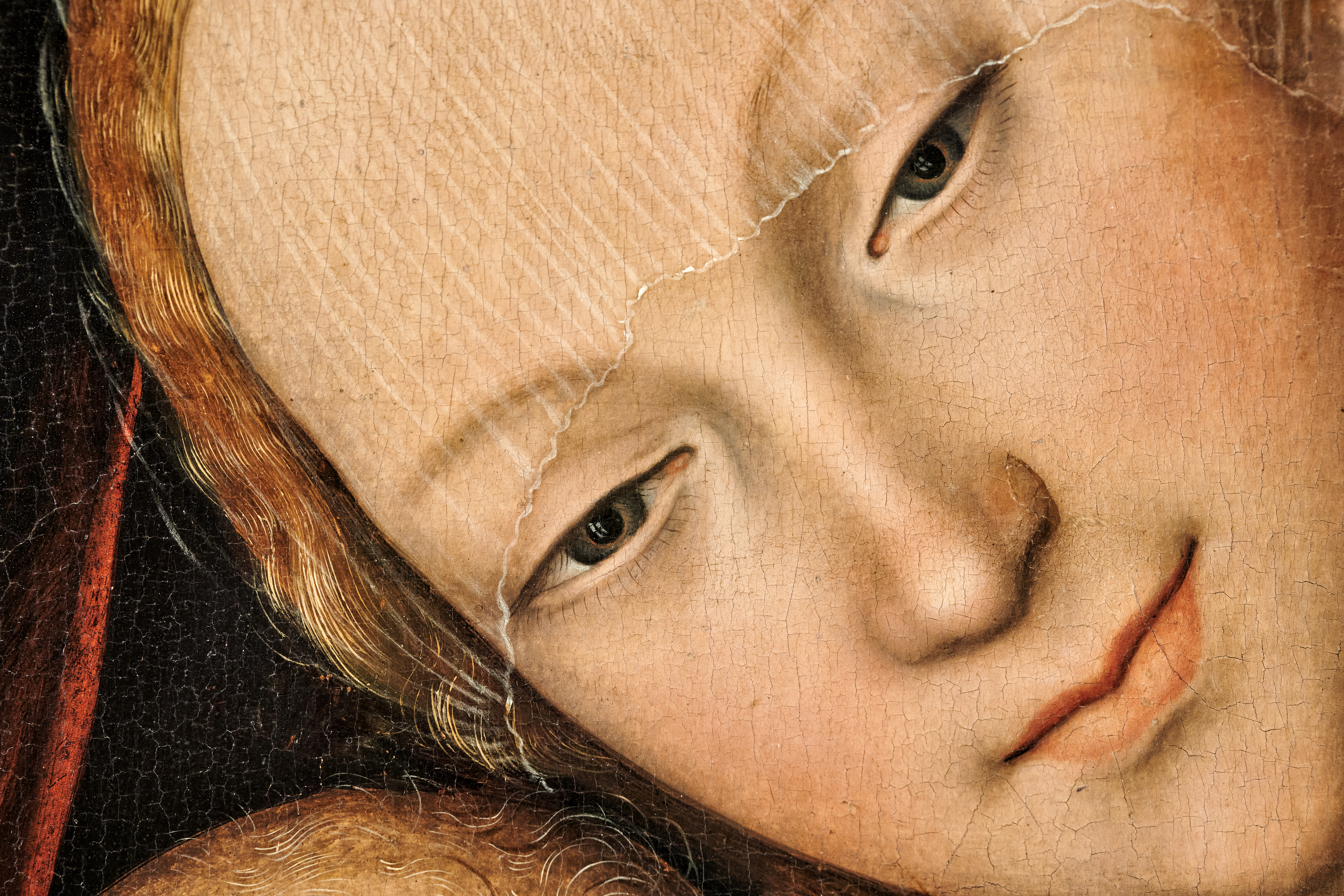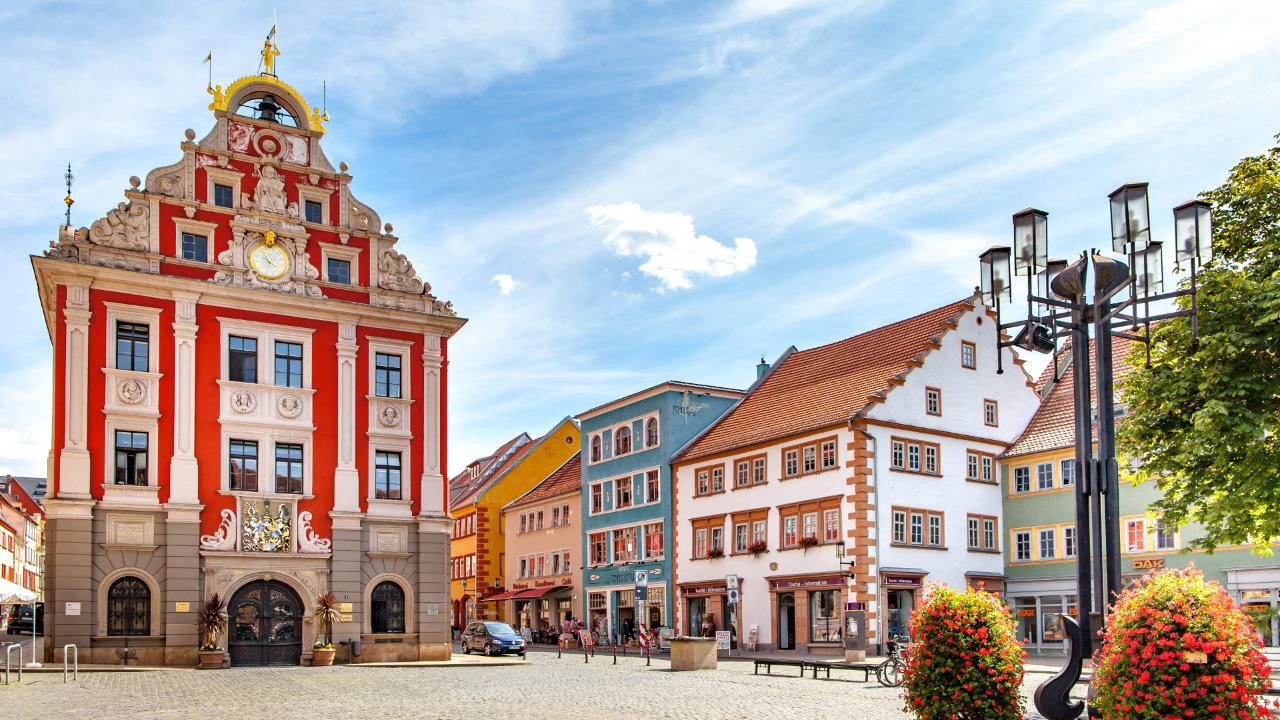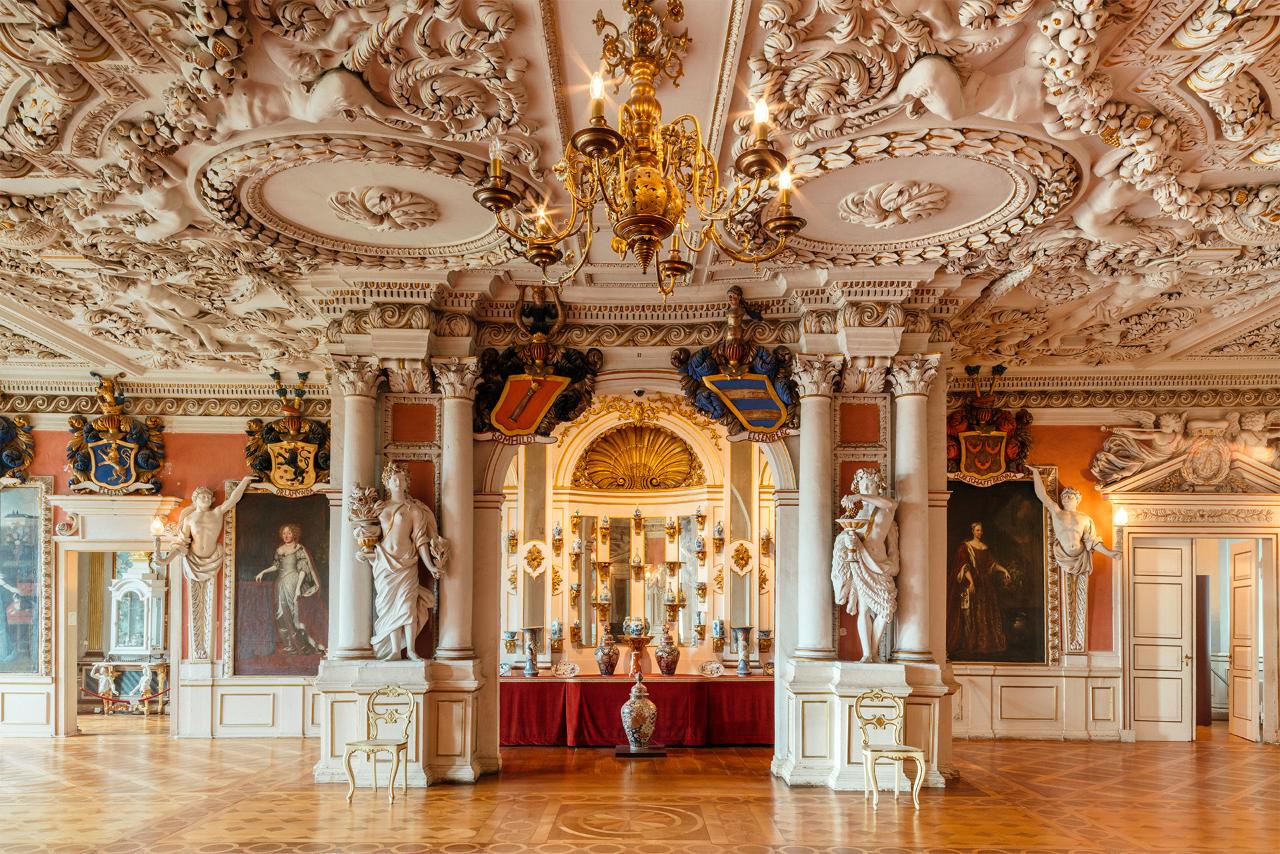
Testimonies for posterity
Gotha
The devil's wrath
One story tells of a visit by Luther to Gotha in 1521. The reformer was on his way to the Imperial Diet in Worms. He stopped off in Gotha to preach in the Augustinian church. While he was speaking, stones fell from the gable wall with a loud crash, to the horror of those present. Some believed that this was the work of the devil. Out of anger at Luther, who had stolen so many souls from him. And yes, Luther's ideas quickly found favour in Gotha. As early as 1522, the pastor of St Margaret's Church, Johann Langenhan, proclaimed the new doctrine to the faithful. The Reformation had finally arrived in the city.

The Gotha town hall ©Daniel James Clarke / Cultural Heart of Germany
The Gotha Testament
In 1537, the ageing Luther once again stopped off in Gotha on a journey and stayed in the house of his friend and fellow campaigner Friedrich Myconius. He was plagued by a kidney ailment. He was in severe pain and even thought he was going to die. He dictated a will to Johannes Bugenhagen, who was accompanying him, and discussed the upcoming funeral with Myconius. He wanted to be buried in Gotha. Not in Wittenberg. After a few days of agonising, his complaints finally disappeared. Luther had recovered.
What remains is his "Gotha Testament", an important testimony to his thoughts. In it, Luther reaffirms his conviction that he is doing the right thing by taking a stand against the papacy. He also lovingly remembers his wife and children. The special significance of this document lies in the fact that it is both a theological and a very personal legacy of the reformer.

The grand hall at Friedenstein Castle in Gotha ©Marcus Glahn / Schatzkammer Thüringen
Treasures in Friedenstein Castle
Friedenstein Castle in Gotha was built after the Thirty Years' War. The name is an expression of the longing for peace of its builder, Duke Ernst the Pious of Saxe-Gotha-Altenburg. He designed his residence to be modestly Protestant on the outside, in keeping with his convictions. However, the complex turned out to be quite large, so that it never had to be extended, even as the administration grew. Today, Friedenstein Castle harbours many a treasure, such as the first print of Martin Luther's treatise "On the Freedom of a Christian" from 1520 or the oldest copy in Arabic of the "Book of Ways and Kingdoms" written by the geographer al-Istahari in the 10th century. Both are part of the UNESCO World Documentary Heritage.
The splendid residence rooms of the dukes provide an insight into baroque life and tell of the family's connections to the European royal houses. Whether Sweden, Denmark, Great Britain or Belgium - there is hardly a contemporary royal family that is not related to the Gotha family...
TIP: DUCAL MUSEUM IN GOTHA
Header: ©Florian Trykowski, Thüringer Tourismus GmbH







